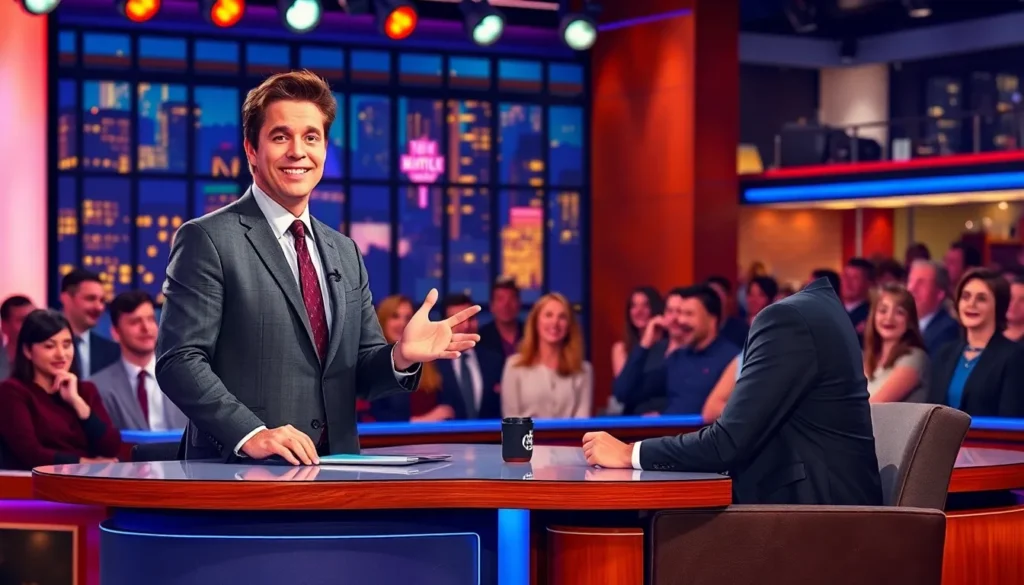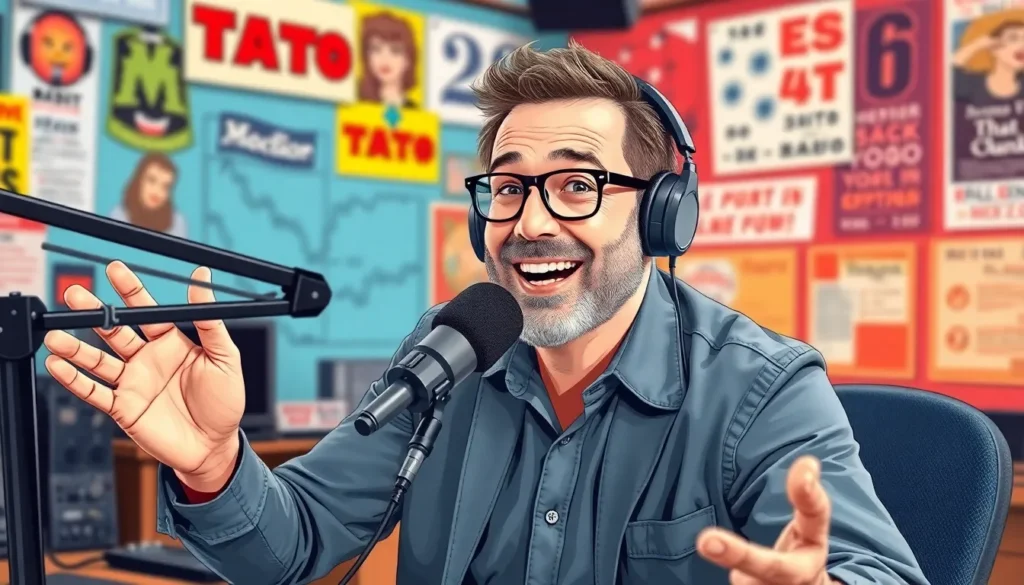Late night talk shows have become a staple of American entertainment, blending humor with current events in a way that keeps audiences coming back for more. But what’s behind the curtain of those glitzy sets and punchlines? Ratings tell a story that’s often more dramatic than the monologues themselves.
As viewers tune in or switch off, these numbers reveal who’s winning the late-night battle of wits. From viral moments to celebrity interviews, the competition is fierce. It’s not just about laughs; it’s about who can capture the audience’s heart and keep them glued to their screens. So, grab your popcorn and settle in as we dive into the ratings race that shapes the future of late-night television.
Ratings For Late Night Talk Shows
Late-night talk show ratings serve as a key indicator of a show’s popularity and viewership. These ratings reflect a show’s ability to attract an audience, balancing humor with relevant content. Networks often rely on Nielsen ratings to gauge performance, revealing insights into viewer preferences. High ratings typically signify a successful blend of engaging guests, topical humor, and appealing segments.
Current trends show fluctuating ratings among major late-night hosts. For instance, shows like “The Tonight Show Starring Jimmy Fallon” and “The Late Show with Stephen Colbert” often compete for the top spot. Rankings may shift weekly, as guest appearances and topical discussions significantly impact viewership.
A critical factor influencing ratings includes social media engagement. Late-night shows frequently leverage platforms like Twitter and Instagram to connect with audiences, generating discussions around episodes. Increased online presence often correlates with higher viewership numbers, leading to improved ratings.
Various demographic groups contribute to the overall ratings landscape. Younger viewers often gravitate toward hosts who incorporate contemporary issues, while older audiences may favor traditional comedic styles. By understanding these demographics, networks can better tailor content to attract broader viewership.
Seasonal events and cultural moments also affect ratings. Events like presidential elections or major sports tournaments often boost viewership as audiences seek cultural commentary. Late-night shows capitalize on these moments, ensuring their content remains relevant and highly rated.
Analyzing late-night talk show ratings reveals an evolving landscape. Viewer preferences shift, requiring hosts to adapt. As competition intensifies, successful shows often innovate their formats to maintain or enhance ratings.
Factors Influencing Ratings

Ratings for late-night talk shows depend on several key factors, influencing their popularity and viewer engagement.
Host Popularity
Host popularity significantly impacts ratings. Viewers often tune in based on their favoritism toward hosts like Jimmy Fallon or Stephen Colbert. Charismatic personalities tend to draw in larger audiences. Audience connection plays an essential role, as relatable hosts create loyal fan bases. Guest appearances by notable celebrities can also elevate a host’s visibility. High-profile interviews attract attention and boost viewership. Hosts addressing current cultural or political issues appeal to audiences, reinforcing their choice to watch.
Format and Content
Format and content fundamentally shape a show’s appeal. Innovative segments and unique comedic styles resonate well with viewers. Late-night shows often adapt to current events, offering timely commentary that keeps them relevant in a rapidly changing world. Engaging narratives and humor attract various demographics, ensuring broader appeal. Audience feedback on social media provides valuable insights, guiding hosts to tailor their content effectively. Shows that blend interviews, sketches, and audience participation tend to capture more viewers. Adapting to viewer preferences enhances a show’s overall ratings and long-term success.
Comparing Top Late Night Talk Shows
Late-night talk shows remain a staple in American entertainment. Ratings serve as a vital measure of their success and popularity.
Show A Ratings Analysis
“The Tonight Show Starring Jimmy Fallon” consistently attracts a significant audience, often leading the ratings race. According to the latest Nielsen ratings, it has an average viewership of 1.6 million. This show’s appeal stems from its engaging mix of celebrity interviews and comedy sketches. Guest appearances by A-list celebrities frequently boost its ratings. Social media interaction enhances audience connection, further drawing viewers in. Recent viral moments on platforms like Twitter also contribute to its visibility.
Show B Ratings Analysis
“The Late Show with Stephen Colbert” presents strong competition, with an average viewership of 1.4 million. Colbert’s insightful commentary on current events resonates particularly well with a younger demographic. Political satire remains a cornerstone of his format, often leading to spikes in ratings during major events. Interaction on social media channels amplifies engagement, keeping viewers invested. Unique segments, such as musical performances and witty skits, also play a crucial role in enhancing its appeal. These elements keep the show relevant and on par with competitors.
Trends in Late Night Talk Show Ratings
Late-night talk shows continue to adapt to the dynamic media landscape, with ratings reflecting viewer preferences closely.
Impact of Social Media
Social media platforms amplify the visibility of late-night shows significantly. Shows leverage Twitter and Instagram for real-time audience interaction, engaging viewers beyond traditional broadcasts. Each tweet or post creates buzz, drawing in potential viewers who might not watch live. Viral clips of standout moments also contribute to increased ratings, illustrating viewer preferences. Hosts often utilize trending topics to connect with audiences, ensuring relevance. Guest appearances and sketches frequently become popular on platforms, encouraging sharing among users. Engaging directly with audiences fosters loyalty and drives viewership, demonstrating the crucial role of social media in shaping late-night ratings.
Shifts in Viewer Demographics
Viewer demographics have undergone notable changes, influencing late-night talk show ratings. A younger audience increasingly seeks hosts who address contemporary societal issues compellingly. Many find entertainment in hosts who offer insightful commentary relevant to their experiences and concerns. In contrast, older viewers typically gravitate toward traditional comedic styles, valuing established formats. Ratings reflect these trends, as shows adapt their content strategies accordingly. Seasonal events or cultural happenings can sway demographics, prompting shows to modify their tone or focus. Consequently, hosts who tailor content to meet audience expectations often see improved ratings. Understanding these demographic shifts remains essential for navigating the competitive late-night landscape.
Conclusion
Late-night talk shows continue to be a vital part of American entertainment. Their ratings not only reflect viewer preferences but also shape the strategies hosts use to engage audiences. As the landscape evolves with shifting demographics and the rise of social media, the competition among shows remains fierce.
Hosts who adapt to these changes and connect with viewers on relevant issues often see greater success. The interplay between humor and current events keeps these shows fresh and appealing. The ongoing ratings race will undoubtedly influence the future direction of late-night television, making it an exciting space to watch.



